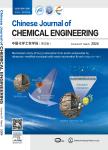The effects of amino groups and open metal sites of MOFs on polymer-based electrolytes for all-solid-state lithium metal batteries
作者机构:School of Energy and PowerJiangsu University of Science and TechnologyZhenjiang 212003China Power&Energy Storage System Research CenterCollege of Mechanical and Electrical EngineeringQingdao UniversityQingdao 266071China College of Chemical Engineering and TechnologyTaiyuan University of TechnologyTaiyuan 030024China Institute of Mechanics and EnergyNational Research Ogarev Mordovia State UniversitySaransk 430000Russia
出 版 物:《中国化学工程学报:英文版》 (Chinese Journal of Chemical Engineering)
年 卷 期:2023年第60卷第8期
页 面:80-89页
核心收录:
学科分类:0808[工学-电气工程] 081704[工学-应用化学] 08[工学] 0817[工学-化学工程与技术]
基 金:financially supported by National Natural Science Foundation of China (21701083) Postgraduate Research & Practice Innovation Program of Jiangsu Province (KYCX20_3137)
主 题:Solid composite electrolytes NH_(2)-MIL-101(Fe) All solid-state lithium metal batteries Metal-organic frameworks(MOFs) Open metal sites(OMSs)
摘 要:Metal-organic frameworks(MOFs) are becoming more and more popular as the fillers in polymer electrolytes in recent years. In this study, a series of MOFs(NH_(2)-MIL-101(Fe), MIL-101(Fe), activated NH_(2)-MIL-101(Fe) and activated MIL-101(Fe)) were synthesized and added to PEO-based solid composite electrolytes(SCEs). Furthermore, the role of the —NH_(2) groups and open metal sites(OMSs) were both examined. Different ratios of MOFs vs polymers were also studied by the electrochemical characterizations. At last, we successfully designed a novel solid composite electrolyte containing activated NH_(2)-MIL-101(Fe),PEO, Li TFSI and PVDF for the high-performance all-solid-state lithium-metal batteries. This work might provide new insight to understand the interactions between polymers and functional groups or OMSs of MOFs better.



